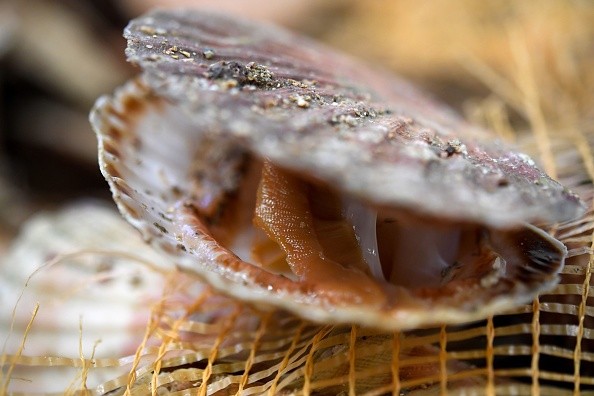Antarctic seas feature circumstances that cause items and live animals to freeze even while submerged. This is a significant issue for polar marine transport.
The temperature of so-called supercooled water is slightly below freezing.
Water in Antarctica has a freezing point of around -1.9 °C due to its high salt content, however, it is about 0.05 °C colder.
The tiniest perturbations, such as sand grains or surfaces, can cause this supercooled water to freeze, which can be catastrophic for organisms that cannot survive frozen.
Scallops resistance to cold waters

The scallop Adamussium colbecki has developed a particular surface structure that shields it from ice, making it extremely resistant to freezing in the frigid seas of Antarctica.
Konrad Meister is a scientist who works at the Max Planck Institute for Polymer Research (MPI-P) in Mainz and is a professor at the University of Alaska.
Divers attracted his attention to the scallop's effective ice protection system during a trip in Antarctica.
According to Meister, their divers noted that they had never encountered large-scale ice on the surface of this local scallop species.
The multinational study team, which includes representatives of various MPI-P research units as well as the University of Oregon, believes that the scallop species evolved a particular surface structure that protects it against ice during evolution, as per ScienceDaily.
Warmer-weather scallops have disorganized or smooth shell surfaces, but the Antarctic variety has a tiny, extremely regular structure.
Read more: Freshwater Ice That Melts Into Three Different Shapes Depending on Water Temperature Discovered
Cryofouling of antarctic scallops
On its lid, the microscope exposes small edges that have spread in a radioactive form. These ridges guarantee that the water freezes there first.
If the freezing process is allowed to continue, a continuous sheet of ice emerges, resting only on the edges.
Because of the limited adhesion between the ice and the crust, even the tiniest undersea flow can remove the ice, preventing the scallop from freezing, per News Collective.
Aside from microscopic study, the researchers also conducted ice tests with Antarctica and scallops from warmer places.
It has been shown that the Antarctic scallop requires far less force to remove its ice cover than other species.
Cryofouling of Antarctic scallops might be harmful in a variety of ways, in addition to causing buoyant lifting and very quick death.
Ice adhering to a scallop's shell, for example, might affect its swimming and escape movements or obstruct water flow channels required for filter feeding.
In this situation, if the Antarctic scallops lack anti-cryofouling skills, a higher proportion of the population would likely face the same risks as epizoic sponges from icing: ice growth, involuntary floating, and likely mortality when merged into the sea ice, Nature noted.
Given that no cryofouled live scallops have been seen, the icing procedure on scallops may be different, offering reduced accumulation and floating dangers.
For decades, ecologists have regarded anchor ice as a significant source of disturbance in the shallow-water benthic ecosystems of McMurdo Sound, Antarctica.
The processes behind the varied consequences of underwater ice accumulation among species, however, remain unknown.
Our studies of Antarctic scallops in their native environment reveal that their exposed mineral shells resist cryofouling passively, even in benthic areas influenced by continuous underwater ice formation.
© 2026 NatureWorldNews.com All rights reserved. Do not reproduce without permission.





